
Portraits of the Royal Family
(from Charles III to Fernando VII)







 |
Goya was taken to the Court by his brother-in-law Francisco Bayeu, painter to Charles III since 1767 and with a salary of 24,000 reales a year. His clients were people connected to the Court although he also found time to paint for his friends and fellow Aragonese. His principal clients were Charles III and Chales IV, whom he served as court painter from June 1786, with a salary of 15,000 reales a year, which rose to 50,000 on the 31st of October 1799, when he was named First Court-Painter. He also received 5,500 reales for a carriage, a symbol of high social status. However, the proportion of portraits commissioned by the Royal Family was less than any other genre that Goya worked in (cartoons for tapestries, religious paintings, etc.).
After entering court, Goya became acquainted with the work of his great contemporaries, and the extensive royal collections acquired through the centuries. There he saw the abundant work of Velazquez, who together with Rembrandt and Nature, he said had been his guides. The portraits of the family of Philip IV impressed Goya. He drew and made etchings of them. His first commission, Charles III, hunter (1788, Prado Museum), a consequence of a painting commissioned by the Bank of San Carlos, is a conscious homage to Philip IV, hunter (1636, Prado Museum). Another work was Charles IV, hunter, which made a pair with Queen Maria Luisa with Mantilla. (Both 1799, Patrimonio Nacional, Palacio Real, Madrid). There is also the masterly group portrait Family of Charles IV (1800-1801, Prado Museum), and the superb equestrian portraits of Charles IV (1800-1801, Prado) and Maria Luisa de Parma (1799, Prado). In these portraits he used the inspiration of Velazquez in the iconography (Las Meninas and the equestrian portraits of the Austrias) and in the suggestion of 'magic of the ambience'(a phrase which the painter's son Javier said his father used). The family of Charles IV is a paradigmatic work; there is no focus, although the king, queen and their successor The Principe de Asturias stand out. Also notable is the domesticity of the scene. It is summation of the Court, but it is, above all, a picture of a model family according to the ideas of the Enlightenment. Goya did not receive any special attention from the royal family although he mentions in some letters having shared intimate moments with them. One of his obligations was to produce in large quantites the prototypical image of the royal family for public institutions and private individuals (for example, a painting of the royal couple in gala dress, painted in 1801 as a present to Napoleon and which never reached its destination, now in the Palacio Real). These copies, many of which have been lost, were not always painted by the artist but were passed on to painters in his workshop to finish. Almost nothing is known about the workshop apart from the fact that outstanding students from the Academia de San Fernando worked there, and that there were joint projects with the Valencian Agustín Esteve (Court painter from 1800), who was a copyist of other works by Goya. Under Fernando VII neither the person nor the work of Goya received any royal appreciation. He did paint, amongst other works, the Generalìsimo (1814, Prado) and FernandoVII with royal insignia for the Junta del Canal (1) Imperial de Aragón (1814-1815, Museo de Zaragoza). See also the portraits of:
Notes(1) Commission established to undertake the cutting of a canal in AragónBibliographyGLENDINING, Nige. Goya : La década de los Caprichos : Retratos 1792-1804. Madrid, 1992. (Catalogue of the exhibition held in the Academia de San Fernando, Madrid).TOMLINSON, Janis A. Goya en el crepúsculo del Siglo de las Luces. Madrid, 1993. (Or. ed. in Eng.: Goya in the Twilight of Enlightenment. New Haven & London, 1992). |
|
| Charles III in hunting dress | 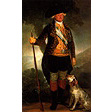 |
|
| Charles IV in hunting dress | 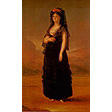 |
|
| María Luisa in a mantilla |  |
|
| The family of Charles IV | 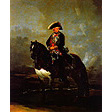 |
|
| Charles IV on horseback | 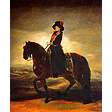 |
|
| The queen María Luisa on horseback | 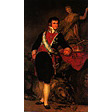 |
|
| Fernando VII in an encampment | 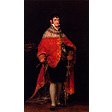 |
|
| Fernando VII with the royal mantle |
 |
InfoGoya 96 is an initiative of the University of Zaragoza, sponsored by the Institution Fernando el Católico of the Deputation of Zaragoza on an Apple Internet Server donated by Apple Computer. |    |